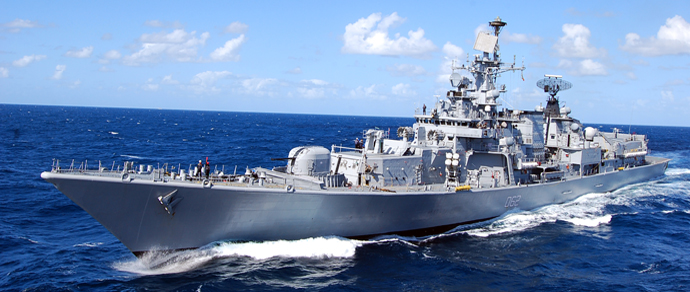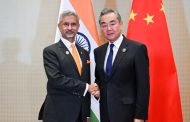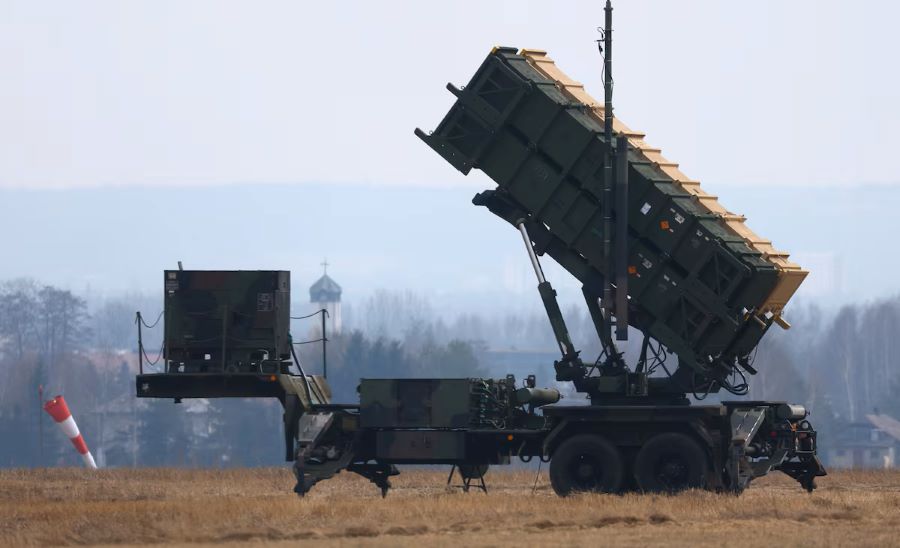The Chinese Communist Party’s (CCP) mouthpiece Global Times recently raised the issue of Indian Navy warships operating in the South China Sea in an article titled ‘Is South China Sea card useful to New Delhi?’ This was in response to reports in the Indian media that India had ‘stealthily’ deployed a warship in the South China Sea soon after the Galwan clashes on 15 June.
Global Times Editor Hu Xijin, adrift on a sea of hyperbole, provided a shrill preface to the article, asking readers how to interpret these Indian moves….Is New Delhi playing a so-called South China Sea card to pressure China? The views of experts were thereafter laid out as a message to India and it’s Navy. The article makes interesting observations and indicates that CCP is rattled and is cognizant of its soft maritime underbelly.
Global Times contends that the deployment of Indian warships to the South China Sea is unique to the current India-China situation. Nothing could be further from the truth! Indian warships have visited South China Sea and even China on numerous occasions, the most recent being the highly publicized visit of frontline stealth destroyer Kolkata to Qingdao in April 2019. This warship transited through the South China Sea, crossing through the Taiwan Strait en route to Qingdao. The unique nature of the maritime medium permits inclusive utilisation of the global commons, much unlike the restrictive regime illegally being attempted by CCP’s Navy in the South China Sea.
The article highlights Indian warships’ contact with its US counterparts over ‘secure communication systems’ and interprets this as India’s eagerness to give an impression that India and US are ‘allies’ in the South China Sea and Indian Ocean Regions.
India has friendly relations with the global comity of nations, and especially with China’s immediate neighbours. India has also fostered strong partnerships with the top economies of the world, except for China. Engagement and exchange of pleasantries between warships of friendly countries on the high seas should not be viewed by Global Times as India developing allies against the CCP, rather it should be viewed as India’s acceptability to all most nations of the world; excluding China and Pakistan.
The ongoing situation in the Indian Union Territory of Ladakh has been described as a ‘border dispute’. However, India stands firm in its resolve that the situation is another manifestation of CCP’s misplaced sense of territorial irredentism. India has no use for ‘distracting’ the CCP as stated in the article; rather it is to be expected that the government of the day would utilise all instruments of national power to restore status quo ante.
Naive arguments about an India-US axis against the CCP Navy in South China Sea is also a reflection of CCP’s vulnerabilities at sea. The coincidence of the Indian media report just days after the over-hyped test of the DF-21 and DF-26 missiles by the CCP Rocket Force seems to have visibly upset Global Times and its benefactors.
Another constant thread in the article is a fear that India will escalate ‘adventurous actions in the South China Sea’. India is, however, a country with an ancient civilizational background, with no history of practicing expansionism. CCP’s China is, however, a different tale. Island nations of the Pacific, ASEAN neighbours, Central Asian countries and even the Galapagos Islands, are all victims of CCP’s thirst for expansionism; a rather discordant note for an ancient civilisation to be pursuing.
While 2020 has been a rough year for the whole world due to the Wuhan virus, CCP has utilised this period to further its claim on Japanese Senkaku islands; regularly violate South Korean and Taiwanese airspace using fighters, bombers and reconnaissance aircraft; attack Vietnamese fishing boats in the South China Sea; pressurise Indonesia, Philippines and Malaysia in the South China Sea with exaggerated claims; carry out targeted cyber-attacks against Australia; claim the Russian city of Vladivostok; usurp large tracts of land in Nepal; claim the Sakteng sanctuary in Bhutan, and now nearly half of Tajikistan
The list is quite endless if one were to include CCP’s attempts to intimidate and usurp territory and strengthen influence across smaller Asian and African countries and their governments.
Lastly, the article labours on Indian Navy warships taking actions to undermine CCP’s territorial sovereignty in the South China Sea, and also sending one of its aircraft carriers to the region. The article glosses over South China Sea Arbitration ruling of Permanent Court of Arbitration (case number 2013-19), which was delivered under Annex VII to UNCLOS, 1982. This seminal judgement states that there is no legal basis for CCP’s expansionist ‘9-dash line’ and that CCP is violating its obligation of refraining from aggravating the situation.
On the other hand, to enhance security and safety of international shipping passing through the global commons, and on request from friendly nations, the Indian Navy has been providing HADR assistance, joint EEZ patrols, hydrographic surveys, pollution response, search and rescue etc. These missions have been an intrinsic part of India’s outreach philosophy and Indian naval warships have carried the message with their visits to over 100 countries in the past 75 years, rekindling old ties and establishing new ones.
Global Times facetiously describes India as a ‘fox assuming the majesty of a tiger’. Perhaps it should take stock instead of CCP’s actions in the South China Sea and pay heed to the Chinese idiom yĭqiánglíngruò,‘there is no honour in the strong bullying the weak’.
By Ravi Shankar









































1 Comments
nafsa.info
Appreciate this post. Will try it out.